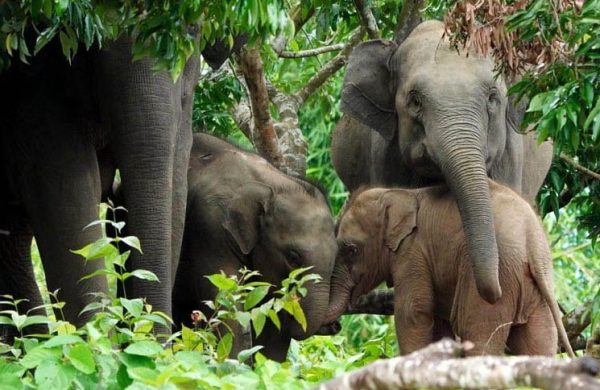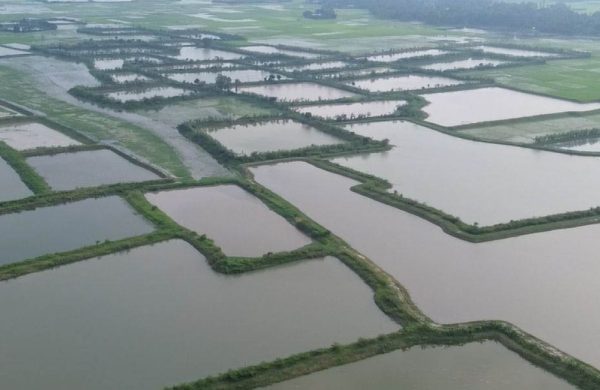Wild elephants face alarming decline amid rising deaths, habitat loss
- Update Time : Tuesday, August 12, 2025

TDS Desk:
Over the past decade, at least 124 wild elephants have died across Bangladesh’s main elephant habitats such as Cox’s Bazar, Chattogram, the Chittagong Hill Tracts, and Mymensingh.
Many were victims of retaliatory killings, electrocution, poaching, and accidents such as train collisions.
The Wildlife Management and Nature Conservation Division reported that from 2016 to January 2025, Chattogram alone recorded 102 elephant deaths.
Causes included electrocution (16), shootings (5), accidents (17), and natural causes such as heart failure (53).
Conservationists argue that human activity underpins most of these fatalities.
In Mymensingh, since 2016, another 22 elephants and 39 people have been killed in human–elephant conflict, according to divisional forest officer ANM Abdul Wadud.
Between 2019 and 2024, conflicts in Chattogram also left 44 people dead, at least 33 injured, and destroyed property belonging to 382 families.
A 2016 International Union for Conservation of Nature (IUCN) survey estimated Bangladesh’s elephant population at just 457 — comprising 268 wild elephants, 93 migratory elephants, and 96 in captivity.
It also revealed that from 2003 to 2015, 63 wild elephants were killed, meaning the rate of killings has roughly doubled in the past decade.
MA Aziz, a professor of Zoology at Jahangirnagar University who has studied elephants for decades, said the situation in Mymensingh worsened after a 50km permanent barbed-wire fence was built along the Bangladesh–India border in 2007 between India’s Meghalaya and Bangladesh’s Sherpur and Jamalpur districts.
The fence originally had 44 gates, each about 3km wide, to facilitate elephant movement.
“Nine gates were used regularly, seven moderately, and the rest occasionally. Now all are permanently closed, forcing elephants to take unfamiliar routes through Jhenaigati, Sreebardi, Nalitabari, and Bakshiganj. This has led to increased crop raids and dangerous encounters with people,” Prof Aziz added.
Conflicts peak during paddy plantation and harvesting seasons; December–January, March–May, and July–August, when ripe rice attracts elephants. Jhenaigati is the worst-affected upazila, followed by Sreebardi and Nalitabari.
“In most fatal encounters, it is males–both humans and elephants that die,” he noted.
He added that habitat loss is an equally serious factor.
“Elephants need 200–250kg of vegetation and about 150 litres of water daily. As forests disappear, they enter human settlements in search of food and water,” he said.
Prof Aziz called for promoting crops that do not attract elephants, urgent habitat restoration through afforestation, ending forest exploitation, preserving remaining forest patches, halting livestock grazing in forests, and building trust between local communities and the forest department.
He urged joint action with India to reopen transboundary corridors.
“In Moulvibazar’s Juri upazila, only three female transboundary elephants remain — down from seven in 2007–08 and 18 in 1978. Without males, the population cannot reproduce and faces local extinction. Introducing males is necessary to restore breeding,” he added.
The south-east —Rangamati, Bandarban, Khagrachhari, Cox’s Bazar, and Chattogram hosts the country’s largest wild elephant population, estimated at 268.
However, traditional movement routes in the region have been severely disrupted.
According to Prof Aziz, elephants historically moved through 12 natural corridors here, but several have been destroyed.
The Chattogram–Cox’s Bazar railway line blocked some, Ramu Cantonment closed another, and the Rohingya refugee camps in Teknaf cut off one more, he said.
Around 35 elephants are now trapped in Teknaf, confined by cantonments and refugee settlements, Prof Aziz said.
“Elephants try to follow their traditional routes despite barriers, leading to fatal train collisions,” he added, suggesting that overpasses could have prevented this.
He proposed using AI monitoring and advanced cameras to track elephant movements and alert trains in real time.
The Zoology professor added that elephants are plains dwellers rather than hill animals, and deforestation, hill-cutting, and unplanned industrial expansion are pushing them into human areas.
Electrocution is an increasing danger in the south-east, as some farmers use poorly installed electric fences around paddy fields.
He also reported a rare sighting in Rangamati’s Barkal upazila, a pink elephant calf, about 1–1.5 months old, travelling with a herd of eight on June 17 this year.
Prof Aziz said he observed a herd of eight elephants during the visit — five adults, one juvenile, and two calves.
The youngest calf, estimated to be around one to one-and-a-half months old, was pink in color and male. The other calf appeared to be about three months old.
“To the best of my knowledge, such a coloration has never been documented in wild elephants in Bangladesh before.”
However, rising water levels in Kaptai Lake are reducing the herd’s habitat.
“If the water keeps rising and the elephants remain, emergency food supplies such as banana trees, bamboo, and leafy plants may need to be brought in,” he said.
“Without urgent habitat restoration, community cooperation, and cross-border action, Bangladesh risks losing its wild elephants forever,” Prof Aziz added.


















